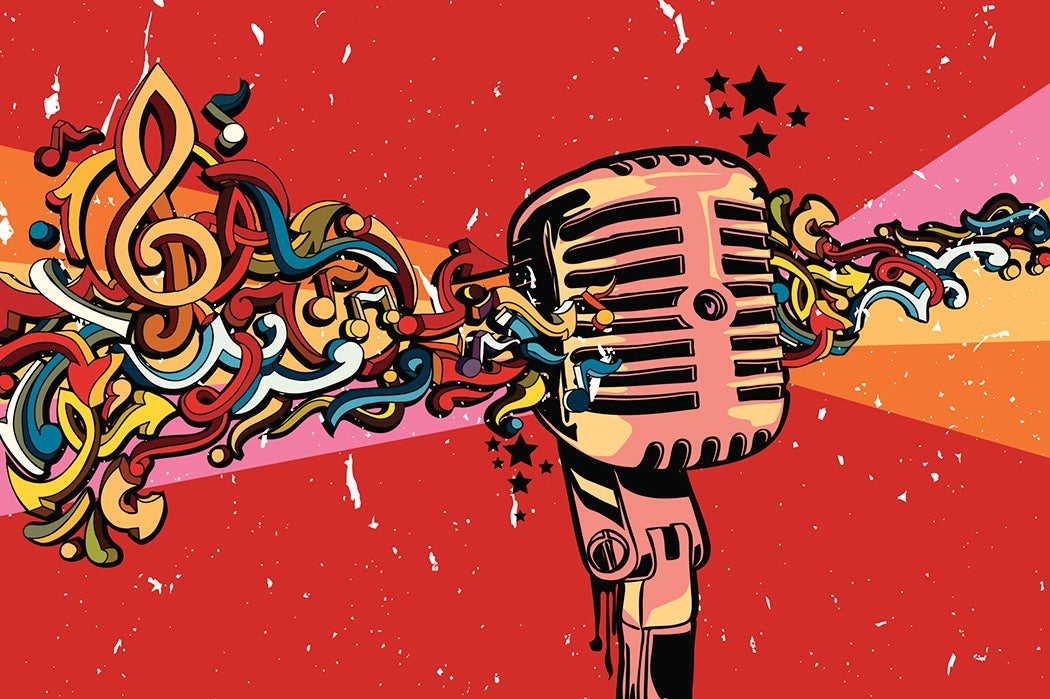When children of refugees tell stories about “history to which they feel they belong but which they did not directly experience,” their rich narratives are not entries in a factual archive. Rather, ethnic studies scholar Long T. Bui locates their art in a cultural repertoire. This theatrical word, he notes, “showcases the rehearsal, recitation, and repetition of certain social scripts about displacement, alienation, and survival” and can “choreograph” new meanings for the participants.
The analysis of artistic expression and performative acts offers a new entry into understanding the complex and contradictory generational experience of refugees.
“Bringing performance studies to bear on literary and cultural studies serves to reread the refugee experience through alternative cultural forms such as hip-hop music and graphic novels,” Bui writes, “genres that emphasize psychosomatic accessibility and emotional intimacy.”
For instance, Southeast Asian American hip-hop artists use their music to illustrate “critical refugee consciousness,” as seen in the oeuvre of Andrew “Nam” Le and Johnny “Vietnam” Nguyen, whose names pay tribute to their ethnic backgrounds and recall the American shorthand used for war.
Examining the song “Ghetto” from Nam’s 2008 album Exhale, Bui suggests that Le shows a contradictory “cathartic release of refugee desire,” with lyrics that both express “gratitude” for being able to be in the United States and criticize life in an urban home that Le describes as “my native slums.”
“The recurring theme of dislocation in Le’s work echoes and resonates with the artistry of fellow 1.5 immigrants (those who migrated as teenagers) or second-generation artists born in the United States, such as Vietnamese Americans Mondega and Tight Eyez, Laotian American G.U.M.B.Y., and Cham American Massiah,” Bui observes. Their work refutes the use of “refugee” as a strictly legal designation. Rather, it’s an existential condition, one that’s reworked on the daily. The music of these generational immigrants argues that
refugee experiences are not reducible to trauma alone, bound up in psychic sadness and pain, but give perceptual depth to the complicated lives and aspirational personhood of people seeking a better life in the face of constant death, poverty, and tragedy.
Le’s music stands out for its polyphony, with Bui picking up on “musical allusions to black soul, funk, and jazz—with hints of Latin Caribbean rhythm and the sounds of Vietnamese pop,” all expressive of Le’s cultural negotiations.
Meanwhile, Nguyen uses “classic hip-hop scratching techniques and battle speed rapping, bluesy jazz music with a pop sensibility, remixed into a hodgepodge of styles that makes it clear why it is significant to study refugee aesthetics as a form of cultural hybridity,” writes Bui, describing these performance techniques as “a Vietnamese American dramaturgy of hip-hop.”
Though Southeast Asian American refugees experiencing urban poverty may be characterized as “acting and trying to be ‘black,’” Bui notes that this can be an over simplification that ignores “the context by which Southeast Asians come to settle within (and unsettle) the domestic borders of a racist nation-state by the sheer presence of their bodies.”
Weekly Newsletter
The use of these aesthetics—what Nguyen himself has called “refugee flow”—generates “a polycultural form of politically conscious hip-hop that…caters to anything that gives back power to the people,” writes Bui.
“At stake is a forceful recognition of the different forms and styles of storytelling that are able to refract the multiple standpoints of stateless peoples,” Bui concludes. This storytelling disrupts the easy narrative that has concluded with resettlement, assimilation, and the ultimate vanquishing of the pain of loss and displacement. In replacing this idealist story, “the refugee repertoire underscores the resilient power of communities to transmit violent memories of the past through future generations, but it also displays the creativity of those born after war to stage their own production of memory.”
Support JSTOR Daily! Join our membership program on Patreon today.







